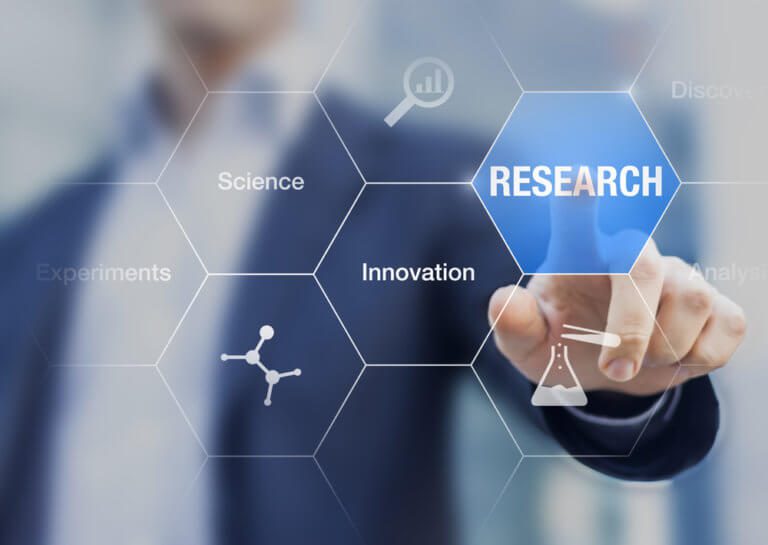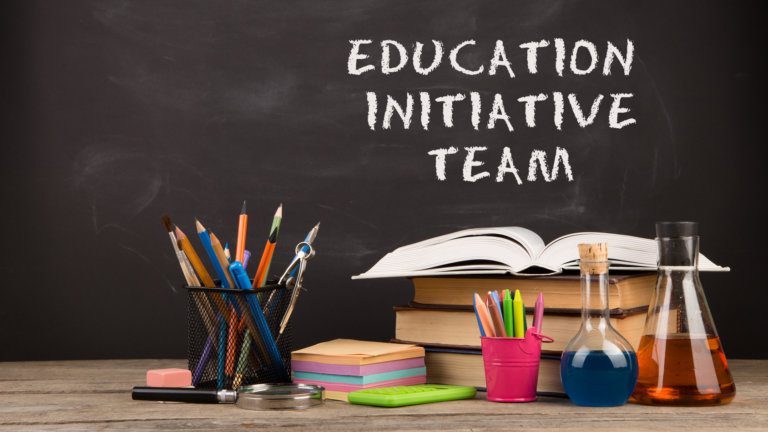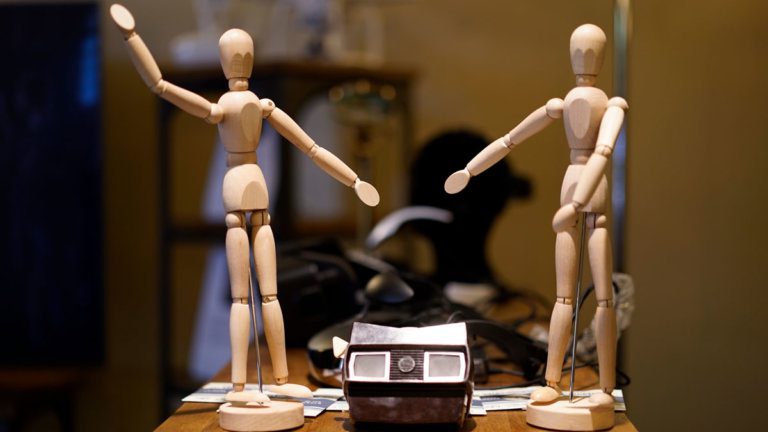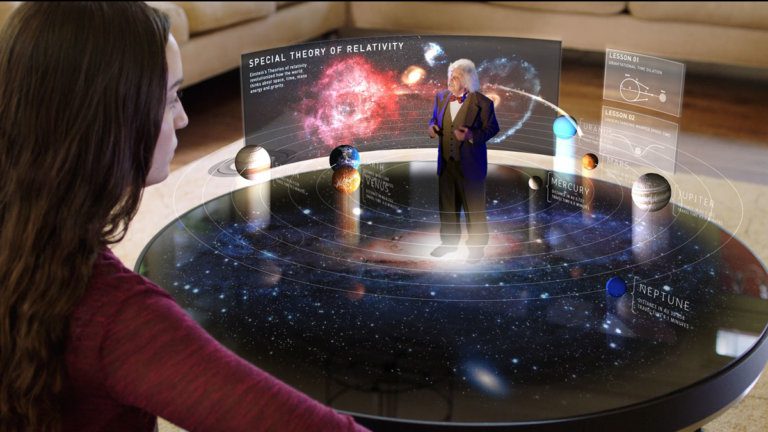Education
Diversity and Excellence – Investing in the Future with Colorado State University

Recently, I attended the Industry Advisory Board for the Computer Science Department at Colorado State University (CSU) and the Advisory Board for CSU’s participation in a National Science Foundation partnership on cybersecurity. As I prepared for these sessions, it gave me a chance to reflect on just how useful working with universities is to our industry.
CableLabs works closely with many of the best universities across the United States – from NYU to Georgia Tech to Carnegie Mellon University. With CableLabs headquarters located in Louisville, CO, we have particularly close relationships with regional institutions, including Colorado University and Colorado State University (CSU). Below, I talk about why working with higher education is so valuable and what it takes to create a great, productive relationship with a university.
How and Why CableLabs Works with Universities
A great deal of focus at CableLabs is on innovation. Working with universities can help us come up with ideas and solutions that the cable industry may never realize or consider. How? The answers: Diversity and leverage.
- Bringing together people that have different life experiences and perspectives ensures we go beyond the obvious and come up with creative, effective ways to solve hard problems. Universities have hugely diverse faculty and student bodies working on interesting problems. As we expose professors and students to the opportunities and challenges the cable industry is addressing, we inevitably get innovative ideas that radically diverge from the way cable industry professionals think.
- Each of the universities we engage is supported by a wide range of commercial entities and government institutions. This provides multiple opportunities to achieve leverage. We gain access to research funded by multiple organizations and develop the potential to achieve collaboration and synergy on challenges shared across industries.
In the process of doing this, we convey our own perspectives and experiences, exposing great minds to our industry and increase awareness of real-world problems. The synergy that results helps identify and foster new ideas that would rarely have developed any other way. Additionally, we help to create and maintain a talent pipeline that can provide well-developed professionals at entry and mid-level positions that can fuel broadband innovation for decades to come.
The security technologies team at CableLabs has worked closely with lead professors at CSU to realize these goals. We’ve developed close, continuous relationships with lead professors, who have, in turn, helped us foster great relationships with their researchers and students. By working closely together to understand problems and emerging technologies, CableLabs can very precisely target funds to help CSU develop resources and capabilities of unique value to the cable industry. Close collaboration ensures relevance and maximizes the chance of research success.
And, the story gets even better. Universities work with a wide range of government institutions, other universities, research laboratories and other businesses. Usually, a security idea relevant to broadband might have manifestations applicable to healthcare, manufacturing, transportation or other industry sectors. Consequently, CableLabs achieves great leverage. A little time and money can yield benefits that would cost millions if pursued in isolation.
What Results have we Achieved?
We funded CSU to join the National Science Foundation Industry/University Cooperative Research Center for Configuration Analytics and Automation (NSF I/UCRC CCAA – the government does like acronyms). The lead professor for CSU at CCAA is Dr. Indrakshi Ray. This program provides numerous benefits:
- Gives us access to and influence in three major research universities
- Leverages funding from many industry partners and the NSF. The security research of interest to cable includes IoT, Network Function Virtualization (NFV) and active network defenses (including deception technologies which makes it more expensive for hackers to attack networks)
We’ve contributed to two great projects, including funding infrastructure, ideas for implementation, and helping the lead professor, Dr. Christos Papadopoulos:
- BGPMon: Helps large network operators detect security problems on the Internet and some CableLabs members are working with CSU now on the project
- Netbrane: Uses big data analytics and some artificial intelligence strategies to detect and mitigate malware. Dr. Christos presented Netbrane last week to an audience at the SCTE ISBE Expo in Denver.
We’re also helping CSU create a lab for IoT security research. We’ve donated IoT devices and collaborated on IoT security considerations. Over the summer, we had an intern, Maalvika Bachani, who worked with Brian Scriber on IoT security to support our work with the Open Connectivity Foundation.
We’ve been collaborating with Dr. Indrajit Ray on trust systems. Dr. Ray is working on how we might extend the excellent public key infrastructure-based trust system used in DOCSIS further into the home and to better secure other verticals such as home automation, remote patient monitoring, managed security services and more.
What it Takes
Achieving this level of collaboration requires a focus on a long-term relationship that is about much more than money. It requires institutional support at the university and close collaborative relationships between researchers at both CableLabs and the university. This allows sustained support of projects that transcends individual personalities and provides the basis for co-authoring great papers that can influence our industry. Finally, it provides an opportunity for co-innovation with a technology transfer path that can get new ideas out into the market. All the while, capturing the imagination of students and building a talent pipeline that will continue to fuel innovation in the cable industry for decades to come.
You can find out more information about our university outreach in our blog post and video "Furthering CableLabs' Innovation Mission through University Research."
Education
Security Infrastructure Enhances Student Privacy, Data Protection, and Can Make Life Easier


In the days of typewriters and post offices, students knew that their educational data, everything in that mysterious file ominously referred to as “your permanent record,” could only be read if someone went into a school’s file room or someone made a copy and mailed it to someone else. For a long time, there were no state and federal laws that read directly on student academic privacy. Eventually, both state and federal laws were enacted which provided increased and detailed protections. While these laws protect each student’s data, complying with the details of each federal and state privacy law can result in a legal minefield for those that need to access a student’s data. As student privacy rules and regulations become more complex, there is an increasing need to leverage a more modern approach to privacy controls and data security. Such an approach would enable automation of regulatory compliance as well as increased protections for student records.
The Legal Landscape
Student privacy laws began with the federal Family Education Rights and Privacy Act (FERPA) in 1974. Additional state and federal laws have added restrictions and complexity to the safeguarding of student records. These laws have followed the arc of the internet and now often include provisions that arise out of schools using online services such as a focus on parental notification and consent when student data is released to third parties. In the U.S., issues such as how data is collected and how it will be used have become hotly debated topics among parent advocates, school administrators, online service providers, and legislatures.
Digital Tools to Manage Academic Privacy Requirements
While the intention of each federal and state student privacy law is good, it is easy to see how all of the laws, taken together, can lead to confusion as to who is to be allowed access to what student data, when is access allowed, and when parental consent is necessary. There is the additional demand that the schools provide sufficient data security. This regulatory complexity paired with the need for sufficient data security can stretch resources for school officials. In addition, the fragmented nature of regulation may stifle any company or institutional innovation due to uncertainty as to what may be legally permissible.
A possible solution lies in automating compliance with privacy requirements through the adoption of modern cryptography techniques that inherently limit access. This approach provides more refined access control beyond ensuring that only the educational institution’s faculty and staff have access to student records. Additionally, cryptography will make school records much more difficult to hack, thereby protecting the integrity of the records and the privacy of the student (such as: grade tampering at the University of Iowa reported on 1/23/17 and extortion hacking at Michigan State).
For example, with the appropriate digital security in place, a high school senior may electronically authorize a school to permit certain universities to receive the student’s academic record. Using security such as a Public Key Infrastructure (PKI), the high school may transmit an encrypted student’s academic transcript to the universities that the student has authorized to receive those records and only those universities would have the necessary key to decrypt the record. PKI also authenticates the student and the transcript. Because the student’s electronic record is encoded with the appropriate legal access controls, only the student’s academic transcript is sent. Other records, such as household income or medical records, are not transmitted. Similarly, in the event a health care provider needs a student’s medical records, the appropriate digital security would ensure that only the student’s medical records are sent. More granular security controls also mean that student data can be de-identified and aggregated to enable researchers and third parties working with educators to improve the educational process.
CableLabs and Kyrio’s research and experience managing digital security for cable, wireless, and the electrical grid have demonstrated the value in using cryptographic access control. Using cryptography to automate privacy controls through a digital security infrastructure means less legal confusion for administrators, enhanced privacy and data security for students, and room for greater educational innovation. Additional benefits can occur by adding blockchain technology in addition to cryptography, topics addressed in these previously published blogs.
Blockchains and the Cable Industry
Hello Blockchain . . . Goodbye Lawyers?
By Simon Krauss, Deputy General Counsel, CableLabs
Education
Re-Imagining the Classroom Experience

The typical school day is evolving with new advances in technology, much of which depends on broadband connectivity. For many children and young adults, their school day begins in a classroom at a local school; for others, a school day may begin in their living room or sitting at their kitchen table. Wherever a school day begins, imagine having the opportunity for it to end in a different state, in a foreign country, or maybe even on a distant continent.
As a part of the Education Initiative Team at CableLabs and as a parent of children in public schools, I have spent time re-imagining how technology could transform our classrooms. What if we used technology to create a borderless, or even boundless educational experience? What impact could we have? What challenges would we face? What solutions might be possible?
Technology Enables Alternative Learning Experiences
By maximizing the use of technology in the classroom and beyond, endless opportunities and vast educational experiences are possible. Technology can enable traditionally schooled, homeschooled, and remote learners to join in on classroom lessons. Video communication, and potentially newer experiences offered by augmented and virtual reality solutions, can offer the ultimate virtual field trip for classrooms and schools of any size. Instead of the required reading assignments that we are all used to, e.g. read this book, write this essay, imagine high school classrooms where an alternative learning experience is assigned to supplement the required reading. For example, a teacher could coordinate a live video conference session with an author as an engaged interactive experience for students.
Newer technology and broadband connectivity, including next generation solutions such as DOCSIS® 3.1 and Full Duplex DOCSIS® 3.1, can leverage multi-location learning and collaboration. Students in the United States can participate in the global community with students from other countries, thus creating opportunities to gain knowledge of other cultures, economic strata, and quality of life. By expanding the scope and perspective of knowledge students gain from alternative learning experiences, we can develop capacity for compassion. Could the use of this technology allow us to provide a broader frame of reference for education and gear outward focus for the next generation to be successful on a global level? Could a greater international perspective in the classroom administer opportunities to solve real world issues and ultimately empower our children through project based learning and problem solving?
Utilization of video conferencing in schools is not a new concept. In fact, many schools have embraced the technology to create alternative learning situations. For example, through Skype Collaborations, teachers in Kansas learned about a water crisis in Nairobi that prevents students from coming to school. Within their science, math, and social studies classes, students in Kansas learn about the Nairobi community, the living conditions, and the resources needed to fix the water crisis faced by the school. Shortly after hearing about their circumstances, the students and teachers of the Kansas school set a goal to help the children of Nairobi get back to their classroom. By Skyping with representatives from Life Straw, the students learned about water filtration systems and how to build them with common household items. Then the students created awareness of the crisis by fundraising to obtain Life Straw Filtration systems for the Nairobi school. After watching students describe their project, it’s clear to see the passion they have gained while working towards providing a sustainable solution for those in need. Through this example, there is no question that technology, often enabled through broadband connectivity, is capable of being used for a variety of purposes.
The Role of the Cable Industry
Introducing alternative learning experiences is an opportunity for the cable industry. As an already strong partner for education, the cable industry is in a position to promote meaningful change. One idea would be to design and develop trusted solutions and enable educators to structure lesson plans outside of the normal classroom activities, take advantage of highly-trusted networks, and introduce new media types. This will enable the teachers to focus on the content of the lesson, and the tech to be more easily accessed to support learning objectives.
Appropriate use of technology within the classroom can accelerate learning while simultaneously developing empathy and altruistic perspectives that would not have been possible even ten years ago. We have the opportunity to develop a generation of individuals who are more empathetic and outwardly focused. By promoting learning without limiting the experiences in our own backyards, we can create dialogue to teach compassion, appreciation, and authenticity.
Education
Human and Computer Cognition

In my mind, the future is not in how we interact with computers, but how computers interact with us, and how lifelike we can make the series of connected artificial intelligence that will become a part of our daily lives.
What do I mean by Artificial Intelligence?
My view of AI is a program capable of some level of autonomy and intelligence, not a super-intelligent system of the sort Elon Musk seems to fear appearing in the near future. That level of intelligence, a true simulation of the human mind, is probably impossible. Of course, that doesn’t mean that our machines do not and will not ever have any degree of intelligence. In the words of Alan Turing, “May not machines carry out something which ought to be described as thinking but which is very different from what a man does?” That is, just because a computer’s thought won’t resemble that of a human doesn’t mean that it won’t be, on some level, intelligent. Machine intelligence is already superior to human intelligence in recall, math, and logic, so we should see it as a parallel to human intelligence rather than a replacement for it.
What will that look like?
Already people are becoming accustomed to the ease of use an intelligent system can provide. After just a few days of using the Amazon Echo, a voice-enabled wireless speaker, trying to change music with anything else feels clunky and unusable by comparison. In the future, we will likely see technologies like this extended onto entire houses, with interconnected appliances controlled by a user’s voice and capable of learning from that user’s routines and daily actions. Obviously privacy and security are major concerns, but not the focus here.
Cognitive Control
As part of my summer internship, I was tasked with attempting to fly a small consumer drone using an $800 cognitive headset. Weeks of experimenting with third party software ended with me only able to direct the drone forward and backward, and not with any real precision. Other attempts at cognitive control of remote vehicles seem to have been largely successful only when the pilot was trained in meditation or other cognitive discipline. I did have the chance to demonstrate the headset on a coworker’s young son, and he had no difficulty at all using multiple inputs to interact with a simulated object. While the technological limitations are clearly the largest hurdle that still needs to be overcome, the mental limitations of the user cannot be disregarded. Perhaps younger generations, growing up with easy access to this technology, will have an easier time interacting with it, but either way, I believe that widespread cognitive control is still many years away.
Can Cable Contribute?
Most intelligent products today are dependent on an internet connection. The Amazon Echo, for example, quickly becomes a fancy paperweight without a constant, strong connection. Any additional connected device will only increase the homeowner’s bandwidth usage. If these intelligent devices eventually achieve mass adoption, we will need much more powerful and reliable networks than we have today.
The Big Picture
Artificial intelligence has the potential to radically improve our standard of living across the board. Robots are already replacing humans in menial production tasks, so why couldn’t an AI eventually replace an accountant or data analyst? The obvious fear this sort of thinking creates is that we eventually end up in a world similar to that envisioned by Aldous Huxley in his famous novel “Brave New World,” one in which humanity has become a race of technicians, maintaining machines that produce their art and music. Personally, I don’t think we have anything to fear, at least in terms of our total replacement by machines. In the words of Thomas J. Watson Jr, the namesake of IBM’s famous Watson supercomputer,
“Computing will never rob man of his initiative or replace the need for creative thinking. By freeing man from the more menial or repetitive forms of thinking, computers will actually increase the opportunities for the full use of human reason.”
Artificial intelligence will never be able to fully replace our creativity, spontaneity, and compassion, much in the same way that no human will ever have the same instant recall and data analysis abilities of a powerful computer. As such, the AI of the future will work in concert with us, its unparalleled computational power combined with our creativity and problem solving.
Sean Fernandes is currently in his third year of undergraduate studies at the University of British Columbia majoring in Cognitive Systems, a mixture of Computer Science, Psychology, and Philosophy, exposing him to a number of perspectives on the future of our interactions with computers and their implications.
Education
Enabling the Transformation of Education

Education, like every other part of life, is being fundamentally transformed by the ubiquity of connectivity and inexpensive computing and storage. Technology is enabling this transformation, but it is driven by the much broader trend in the economy — the transition of the workforce from a manufacturing economy to a knowledge economy.
On July 19-20, CableLabs hosted an Education Summit that brought together thought leaders from across the education sphere and the cable industry to explore the current challenges facing education as well as those of the future. The education system is beginning to see the transformative potential of technology — whether through "one-to-one" initiatives, integration of virtual reality, or gamification. Through the two-day event, three trends stood out in driving a fundamental transformation of education.
Fundamental Shift Toward Experiential and Problem-based Learning
Not surprising to anyone, the need to memorize facts has been largely replaced by Internet search, but unfortunately, the education system is still catching up. The skills for the jobs of today and tomorrow require problem solving, critical thinking, creativity, communication, and collaboration, all skills that are most readily developed through experiential and problem-based learning.
Experiential and problem-based learning can take many forms — "curriculum built on inquiry, project-based learning, internships, service-learning, and entrepreneurial innovation bring the relevance of academic content and simultaneously develop" the necessary skills for the workforce of tomorrow. The current emphasis to more broadly include the development of computer programming skills melds well with a project-based focus, whether developing apps, games, or websites, applying computer science to solve a real world problem is the key. Project-based learning is not limited to the digital world. Makerspaces enable students to create and solve physical world problems using the latest in prototyping and machining technology — 3D printers, CNCs, laser cutters, etc. The key is enabling students to meaningfully contribute to addressing real world problems in their communities.
One amazing example of community-relevant, problem-based learning is the Global Earthquake Forecasting System, which teamed NASA researchers with Alaska high school students in Ketchikan, Kodiak and Old Harbor — where earthquakes and tsunamis pose a significant risk. "Using new cutting edge sensing instruments, the students collect and analyze data used to detect early signals that occur prior to an actual earthquake event. Their findings are then reported to NASA project managers." For their earthquake forecasting work, the Kodiak high school team was awarded first place in 2015 NASA World Wind Europa Challenge, “an annual university-level competition that provides an opportunity for the world's 'best and brightest' to deliver sustainable solutions that serve local, regional, national or international interests.” Not only were they the first ever submission from a high-school team, but they won.
Disruption of Institutions and Curriculum Creation
Learning is no longer limited to the classroom and technology is enabling a fundamental shift of the role of the teacher – from that of "lecturer" to that of "coach." This new paradigm takes many forms and is often referred to as personalized learning, blended learning, or flipped classroom and all have a similar theme of turning the traditional education model inside out and putting the student at the center of an individualized experience.
This new paradigm allows variation, innovation, and “student input into (and even control of) the time, pace, path, and place of learning.” Only with advances in technology and widespread access to connectivity will this new paradigm be able to be implemented effectively, affordably, and equitably.
Ubiquitous connectivity, devices, and inexpensive computing and storage along with low-cost and easy to use tools are also enabling a decentralized approach to curriculum and content creation. Teachers are now able to easily create their own curriculum and content — free from the confines of the traditional text book. The tools for creating and integrating media rich content are readily available. Moreover, platforms, like “Teachers Pay Teachers” enable a market for teachers to exchange the lesson plans and other content they create with other teachers.
Transformative Experience - Immersive and Interactive Virtual Agents
Artificial intelligence (AI) and virtual agents also promise to transform the education experience, just as they will transform entertainment and work. AI and virtual agents will create a platform to preserve and provide history in an engaging format, never before possible. One example is the natural language AI created based on the holocaust survivor Pinchas Gutter. His story will now live on forever through an interactive hologram that can respond to questions about the holocaust and ensure this part of history is never lost.
The promise of AI goes well beyond just preserving history. It will facilitate an individualized and customized interactive experience that has the potential of providing just the right engagement at just the right time to ensure students can successfully achieve the desired education outcome – true personalized learning. AI will not only be able to react to the words we use, but will also be able to read and react to our emotions to facilitate a more comfortable and conducive environment for learning. Using facial and other non-verbal data, the virtual agent will be able to detect fear, frustration, and confusion, among other emotions, to better guide the student’s experience.
All of these trends will drive the network and service requirements necessary to serve the education market of tomorrow – a more decentralized, collaborative, and interactive environment. CableLabs and the cable industry continue to work to develop the technologies required to support a transforming education system — whether that is through increasing network capacity, improving performance, or enhancing network security, to name just a few of our efforts.

